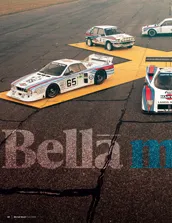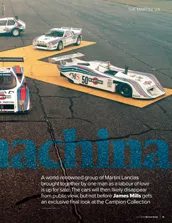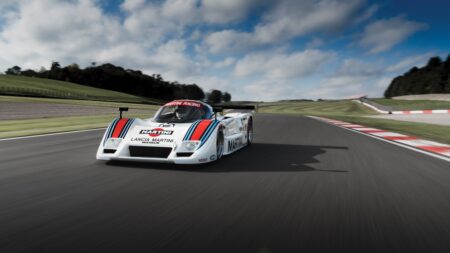The rivalry between Fiat and Lancia was at its height, and Macaluso was dispatched to Elba with drivers Fulvio Bacchelli and Alcide Paganelli to see if a Ferrari 308 could be the basis for an all-conquering rally car. Except Lancia beat them to the draw by getting approval to build 400 examples of the Stratos. Fiat then assessed a more modest rally project, the four-cylinder 1.6 litre X1/9, later increased to 1.8 litres. Macaluso was put in charge and worked with Giorgio Pianta to develop it. He was also competing in rallies with Sergio Barbasio, finishing 10th on the RAC in a 124 Spider.
The following year he was paired with Maurizio Verini and they won the Italian Championship. But the end of his rally career was in sight: “My father was the importer of Omega watches. Because of his early death the business needed someone to run it full-time. My hobby had to go.”
Macaluso’s last event was memorable, however: he was co-driver to Clay Regazzoni in a Fiat X1/9 on the 1974 Giro d’Italia. “He had lost the F1 world championship to Emerson Fittipaldi at Watkins Glen the previous week. I thought he would be quite low – but he was fantastic: cheerful, full of passion and wanted to get everything right on the car.” Unfortunately, they retired when the engine broke.
For almost 20 years Macaluso concentrated on the business. He bought two of the most revered names in Swiss watchmaking – Girard-Perregaux and Daniel Jean-Richard – and, through his friendship with Luca di Montezemolo, formed a link with Ferrari that continues today.
Collecting ex-works rally cars only came to mind in the early 1990s. The catalyst occurred when Giuliano, who helped Macaluso with his road cars, stumbled across an old car on a farm near Genoa. He was told it was a prototype Fiat – an X1/9 that had been originally campaigned by a Formula 1 driver. It was the car in which Macaluso had finished his rally career. It was purchased, taken back to Turin and restored.

Attilio Bettega takes on San Remo in 1983 – the Lancia 037 is Macaluso’s favourite to drive
Getty Images
As you might expect, there is a strong Lancia and Fiat thread running through the collection. The earliest Lancia is a Fulvia coupé used by Simo Lampinen on the 1970 East African Safari; it retired after an accident and spent 20 years in Kenya before being repatriated. Then, in perfect Martini livery, there are the Rallye 037 driven by Miki Biasion in Sardinia and used extensively for testing, the Delta S4 driven to second on the 1986 New Zealand and San Remo rallies by Markku Alén and Dario Cerrato, and the Delta Integrale Didier Auriol took to victory on the 1990 San Remo.
There are examples of both types of Fiat 124 Spider Abarth; the 1460cc car was campaigned by Bacchelli in 1972; the later 1840cc model is the car in which Rauno Aaltonen/Robin Turvey finished second on the 1973 Acropolis. There’s a 131 Abarth, too – the car Markku Alén used to finish third on the 1978 Welsh Rally and Attilio Bettega drove in 1979.
Of the ‘outsiders’, Mäkinen’s Cooper S still has the marks on its bonnet from when it flew open on the Ouninpohja jumps in Finland after mechanics had propped it open to improve the cooling; Timo drove half the stage with his head out of the window to take his third 1000 Lakes win in a row. Söderström’s Cortina is in Group 1 trim: standard seats and lap-and-diagonal seat belts. Then there’s Stig Blomqvist’s long-wheelbase Gp4 Audi Quattro that won the 1982 San Remo, and the Carlos Sainz GpA Toyota Celica GT4 in which the Spaniard secured his first world title (profiled in Motor Sport, May 2007). Nearby, there’s Jean Ragnotti’s 1981 Monte Carlo-winning Gp4 Renault R5 Turbo and Bernard Darniche’s 1973 Alpine-Renault A110.





